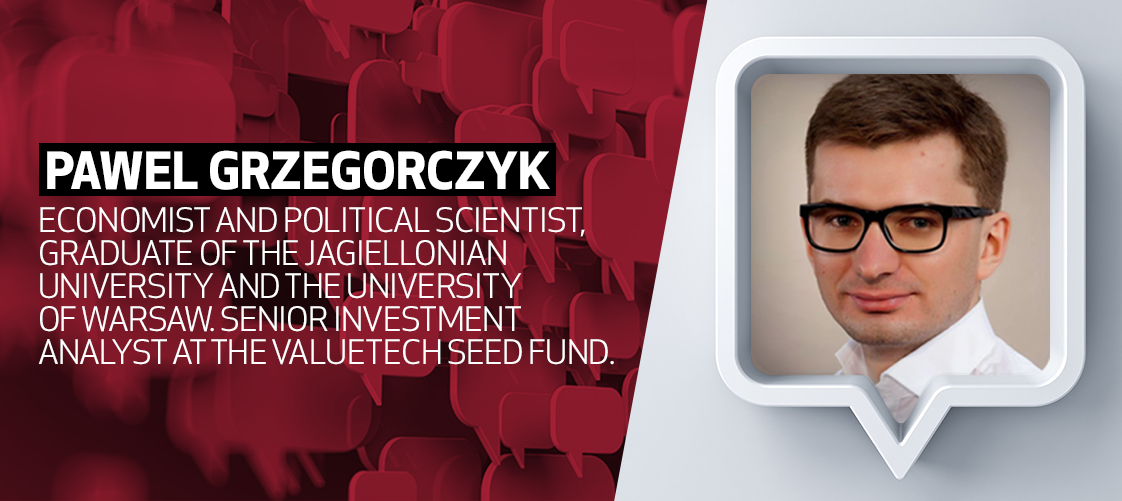Lack of sufficient funds to protect intellectual property, large disproportion between national and international patents, rectors underestimating the role of cooperation between science and business. The system of commercialization of technology at universities is to a large extent inefficient and requires further changes.
Art for art’s sake
Widespread access to patent database analysis software allows accurate evaluation of developed intellectual property. After limiting the search to Polish inventors only, we receive information about approximately 25,000 patent families (inventions protected in more than one country) filed by Polish pioneers. Everything looks great solely on paper. From 2005 to 2015, the number of patents granted dramatically increased, from 305 to 1234 yearly. Public universities were the most active in this respect, taking over half of the 30 highest-ranking applicants. Inventions were mainly patented on the European (4046), American (3504) and Polish (3353) markets.We see the real picture only after switching from strictly quantitative to qualitative rates. An analysis of the current legal status of patents shows that only 19.8% of them still protect intellectual property. 11.2% are pending and the remaining 69% no longer have any commercial value due to loss (33.5%), expiry (32.2%) or cancellation (3.3%).Interestingly enough, the approach of companies and universities to patent applications varies. When it comes to business, most inventions are still protected, whereas the university portfolio includes solutions whose protection has already expired. There might be numerous causes of this situation, such as poor quality ideas, applications filed for the sake of academic scoring or the lack of funds to extend protection after the patent has been granted. There is no doubt, however, that the private sector has a more substantive approach to intellectual property and that universities’ activities in this area are highly inconsistent.
Innovations solely on paper
There is a huge disproportion between the number of national and international patents in universities’ portfolios. The most striking example in this respect is the Warsaw University of Life Sciences, which owns over 1,000 Polish and less than 25 foreign applications and patents. This may indicate both their low commercialization potential and the high costs of legal services related to the implementation of applications at international level.This is not an isolated case, since nine out of thirteen universities declared that, after having been granted a patent in Poland, they took advantage of the possibility of extending protection to other markets in less than 5% of cases. The Jagiellonian University and the University of Warsaw outdo the competition in this respect, significantly increasing the average rate. Being the oldest Polish university, the Jagiellonian University, whose vast majority of patents has international reach, after having obtained protection from the Patent Office of the Republic of Poland decided to expand their patents also on foreign markets in more than half of the cases. The University of Warsaw, the owner of the largest patent portfolio among the surveyed units, took advantage of the opportunity to extend protection for almost half of its inventions.The results regarding the effects of commercialization activities are also not optimistic. In practice, only two trends dominate. One focuses on commissioned research contracts including the transfer of intellectual property rights, the other incorporates technology licensing. In 2017, almost half of the universities surveyed signed less than five contract including the transfer of intellectual property rights and license agreements, with an average contract value of … 55,000 PLN (behind-the-scenes talk suggests even lower amounts). Being among the leaders, the University of Gdańsk, having signed not more than 30 contracts with a total value of up to PLN 3 million, thereby earned not more than PLN 100,000 on a single technology transfer.Commercialization of innovation by establishing a spin-off company (an enterprise formed most often by university employees or students with the capital share of the parent scientific unit) also appears to be a poor alternative. In the case of vast majority of entities surveyed, less than three new enterprises were created with the participation of special purpose vehicles of universities. Both the University of Warsaw, with its participation in over 10 spin-offs and the Warsaw University of Technology, a shareholder of over 20 companies, stand out. Most universities do not accumulate knowledge about the number of employees and financial performance achieved by enterprises of which they are a shareholder. Most likely, a large number of them have issues with their day-to-day operations, given that ten companies formed with the participation of the University of Warsaw employ a total of less than 50 people.
University perspective
The information gathered while writing this article is not surprising in the academic community. Dr. Eng. Gabriela Konopka-Cupiał, the director of Centre for Technology Transfer CITTRU of Jagiellonian University, argues that the large disproportion between patent applications at national and international level in the portfolio of Polish universities illustrates a fragment of reality faced by the units responsible for technology transfer. In her view, three main conclusions can be drawn on this basis: “firstly, the number of transnational patents is directly determined by the university’s budget for intellectual property protection. Secondly, there is still the conviction that technology transfer is not a priority for universities which should focus solely on scientific activities. Thirdly, the successful implementation of technological projects involves responsibility and sacrifices other than those to which scientists have become accustomed to working at universities for years. These factors might have contributed to the creation of a significant barrier preventing scientists from engaging in the commercialization process.” At the same time, Polish universities have made a step forward to increase the efficiency of technology transfer in recent years: “even if not all university authorities understand the activities of technology transfer centres, we observe a great understanding and willingness to cooperate among scientists and deans. We are slowly approaching Western European standards, where there is widespread confidence that the protection of intellectual property and the opportunity to profit from it are essential. This is also reflected in the annual ASTP research, a European organization involved in the transfer of knowledge between universities and industry, which shows that Polish universities are close to the European average in terms of commercialization agreements signed” – says Ms. Konopka-Cupiał.
A tough nut to crack
Ross Devol, Joe Lee and Minoli Ratnatung, the authors of „Concept to Commercialization. The Best Universities for Technology Transfer”, a report compiled in cooperation with the Association of University Technology Managers (AUTM), state that “Research universities are one of the strongest assets America can use to compete in the age of innovation. Federal and other sources of public funding for university research should be viewed as an investment with a high rate of return. Research funding should be a top priority for enhancing American economic growth.” Countries which want to base their economies on knowledge are aware that a university being proficient in the commercialization of technology is its essential element. Research carried out in California prove that every dollar invested in the State University gives direct or indirect returns at $4.41 to the local economy. Having aspirations to be the largest technology hub in Central and Eastern Europe, Poland has a lot to catch up with (especially compared to American universities, for which the modern era of commercialization of research began in the 1970s, with the birth of the biotechnology industry). Thus, it is necessary to take a number of actions – both at the central and university level – aiming at maximum simplification and improvement of the process of commercialization of technology at universities.






